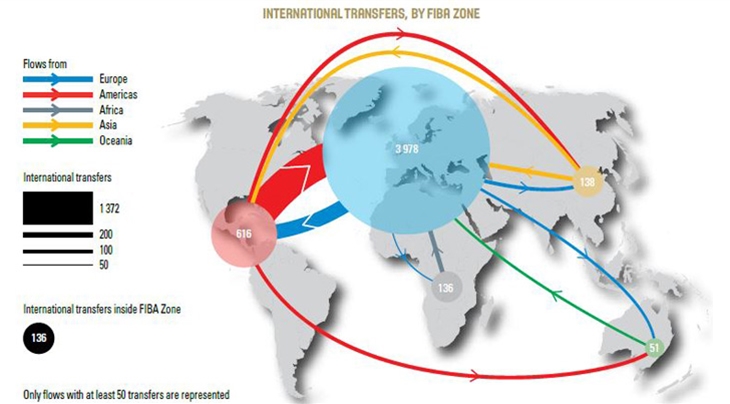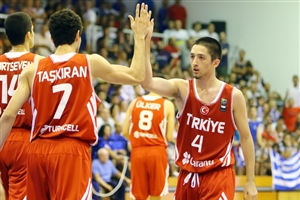
CIES and FIBA issue 2016 edition of International Basketball Migration Report
NEUCHATEL/MIES - For the fifth consecutive year, the International Centre for Sports Studies (CIES) and FIBA have joined forces to produce the International Basketball Migration Report (IBMR), with the 2016 edition accompanied by an additional Evolution Report which focuses on trends since the inception of the IBMR in 2012.
The introduction of the Evolution Report (2011-2016) represents an extension of the highly-productive and outstanding fusion of FIBA's data and insight into international transfers and the renowned analytical expertise of the CIES Observatory. Together, this successful collaboration has not only now showcased the patterns of the international migration of players on an annual basis but, via the new Evolution Report, is now also able to shine a light on the 19 principal international leagues across the entire five-year window since the project originally tipped off.
The main new findings for FIBA from the 2016 Evolution Report are the big differences between the various leagues in terms of nationality, height and age of players, as well as the use of foreign players and the relevance of their court time.
The variations regarding the use and participation of U21 players is also a distinct characteristic of each league - with differences in the number of young players utilised and the court time afforded to them. Some of these differences are clearly related to cultural factors and the specific regulations of each country and league.
FIBA acknowledges the report to be indicative of a high rotation of players from one country to another and that such international transfers have been increasing over the last five years.
Changing players has become more common and there is now scope to consider the possibility of implementing a common international and national transfer window to help stabilise both clubs and leagues via the likely decrease in the turnover of players.
The fifth edition of the IBMR - which spans the 2015-16 basketball season (1 July 2015-30 June 2016) - shows another record number of international transfers, with 8,282 having taken place during the analysis period. This reflects the instability of leagues and also clubs due to a high turnover of players.
Finally, FIBA also noted that minutes handed out by coaches to U21 players had dropped during the 2015-16 campaign. The wider analysis of international leagues produced some mixed outcomes, including Euroleague and Eurocup still relying heavily on American players - something which could prove to be a concern with a new television contract for the NBA (and NBA Development League). For example, this could lead to a decrease in the overall quality of American players coming to Europe, with potentially better salaries in the USA encouraging higher level players to remain in their own country.
Click here to download the full IBMR Report and here to download the full Evolution Report (both pdfs).
###
CIES - The International Centre for Sports Studies
Creating an impact on the way sport is managed worldwide
The International Centre for Sport Studies (CIES) is an independent study centre located in Neuchâtel, Switzerland. It was created as a foundation in 1995 by the Fédération Internationale de Football Association (FIFA), the University of Neuchâtel and the City and State of Neuchâtel.
Using a multi-disciplinary approach (law, sociology, geography, history and management), CIES provides research, top-level education and consulting services to the world of sport. For further information visit cies.ch.
###
About FIBA
FIBA (fiba.com) - the world governing body for basketball - is an independent association formed by 213 National Basketball Federations throughout the world. It is recognised as the sole competent authority in basketball by the International Olympic Committee (IOC).
For further information about FIBA visit fiba.com or follow FIBA on facebook.com/fiba, twitter.com/fiba, instagram.com/fiba and youtube.com/fiba.
















